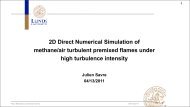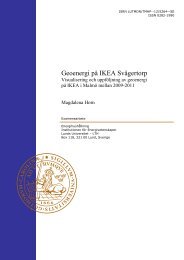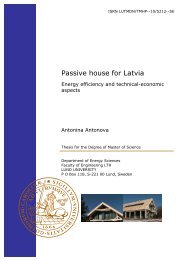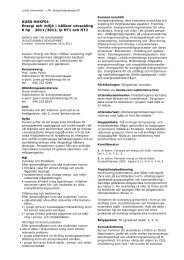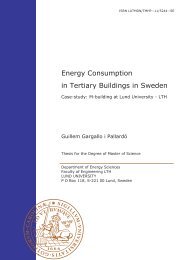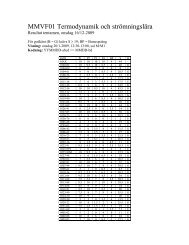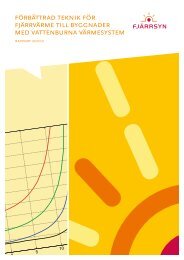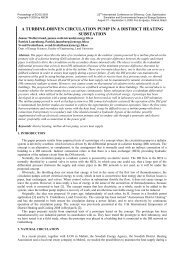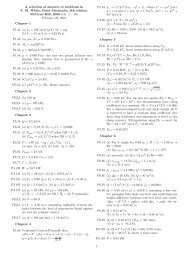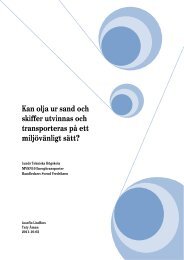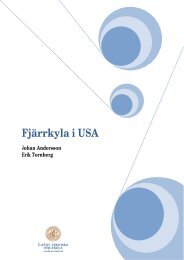MODERN THERMAL POWER PLANTS
MODERN THERMAL POWER PLANTS
MODERN THERMAL POWER PLANTS
You also want an ePaper? Increase the reach of your titles
YUMPU automatically turns print PDFs into web optimized ePapers that Google loves.
There are three major reasons for the reduction of efficiency when operating a<br />
turbine in the wet area:<br />
• thermodynamic losses<br />
• braking losses<br />
• frictional losses<br />
4.6.3.1 Thermodynamic losses<br />
When steam expands rapidly into the wet area across the saturation line, the<br />
nucleation time is limited and the steam will become subcooled while remaining<br />
dry. The steam temperature will therefore undergo the local saturation temperature<br />
and will not be at thermodynamic equilibrium, hence, T < T(p). At a certain point<br />
called the Wilson point, maximum subcooling is reached and droplets start to form.<br />
The Wilson point is not a fixed value, and depends on the rate of expansion. Once<br />
condensation has been initiated and the droplet surface is created the process<br />
proceeds very rapidly. When droplets are formed, the latent heat produced heats the<br />
flow, which speeds up the process of reaching the equilibrium temperature. Sudden<br />
condensation leads to a sheet of discontinuity when the volume of the flow is<br />
reduced. The event has many similarities with an adiabatic shock wave in ideal gas<br />
[23].<br />
Figure 12: The condensation shock in a h-s diagram<br />
The phenomenon can be illustrated in an enthalpy versus entropy diagram, as<br />
shown in Figure 12, but it should be noted that the expansion before the<br />
36



